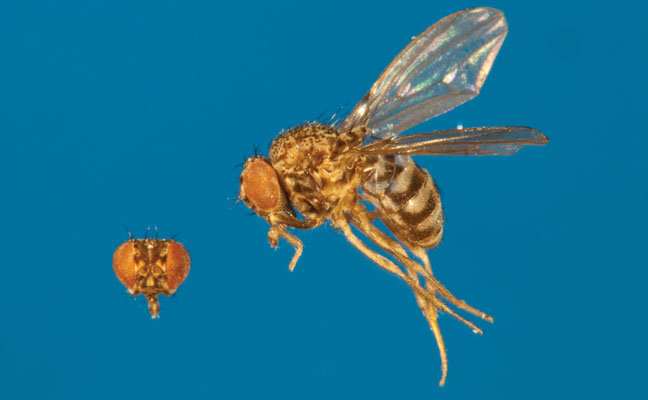
Small flies like dirty drains, but there might also be buildup or decaying organic material underneath a piece of equipment, or even under the floor covering. Photo: courtesy of, and copyrighted by, Gene White, pmimages@earthlink.net
Question: Dan, I read your June 2021 column, “The why of the fly”, and I am having similar trouble getting cooperation with a small fly problem. What do you suggest I do to motivate my client?
— Flummoxed by Little Yucksters
Answer: Well, FLY, flying insects are, without question, the most dangerous animals on the planet. Whether it’s a malaria-carrying mosquito or a dark-eyed fruit fly (Drosophila repleta) transferring disease-causing microorganisms from a dirty drain to a food-prep surface, flies can cause trouble wherever they are.
As I mentioned in my earlier column, one of the best approaches with clients is addressing the public health and food safety factors. But you may need to layer on additional concerns to help make your point. However, before talking to your client, you need to make sure you have a good handle on the underlying causes of the infestation.
While all the small flies we’re likely to deal with represent the presence of decay (something decomposing or fermenting) inside the restaurant, knowing what and where provides you with the corrective actions. Start by collecting information:
1. Where can moisture and organic matter collect? Drains are obvious, as that’s what they are designed for, but look under equipment and cabinets as well. Look at anything on the floor that is removable, especially along the floor/wall junctions.
2. Where are the fruits and vegetables? Fruit flies love fruits and vegetables to be sure, but don’t forget the onions, condiment storage and dispenser areas. Ketchup, for example, is a great fruit fly attractant.
3. How is restaurant waste handled? Do they use liners in the cans? Do they clean the insides of the cans and carts regularly? How about under the cans, or inside can enclosures? Is there a trash room? Commonly found in malls, these areas often are located at the end of some dark, creepy hallway that you may have never seen. Often, trash carts get left in these rooms and serve as transport ships for all sorts of pests.
4. How often are the drip and condensation pans cleaned? Have you ever noticed that sour smell in many bars and soda stations? So have the flies! All those sugary drinks and spilled beer make great food sources — for flies and bacteria alike.

Dan Baldwin, BCE, CCFS, CP-FS
5. What is the integrity level of the floor covering? Floors are regularly subject to mechanical and chemical stress. Over time, small gaps can develop in the flooring (usually tile), often around the grout. Water and organic material can eventually work their way underneath the flooring and ferment, or serve as growth media for fungus and bacteria.
The list goes on, of course, and differs by the type of business. Once you have found all the breeding and feeding sites, along with the structural and cultural practices that contribute to the problems, you’re ready to have the client conversation.
Public health is the primary concern, but it may seem a bit abstract, and you need to introduce the financial impacts of food loss — early spoilage or visible damage — and client experience — no one wants to fight flies for their food or drinks. It is also important to point out the direct and indirect costs related to flooring and plumbing issues, which include the pest problems, customer experience issues, and lost revenue when the floor must be replaced.
There are a great many more things to consider, FLY, way too many to list here. However, if you think beyond just the pest presence and consider what that pest being there really means, you will be able to explain to clients why their cooperation is invaluable.
Leave A Comment